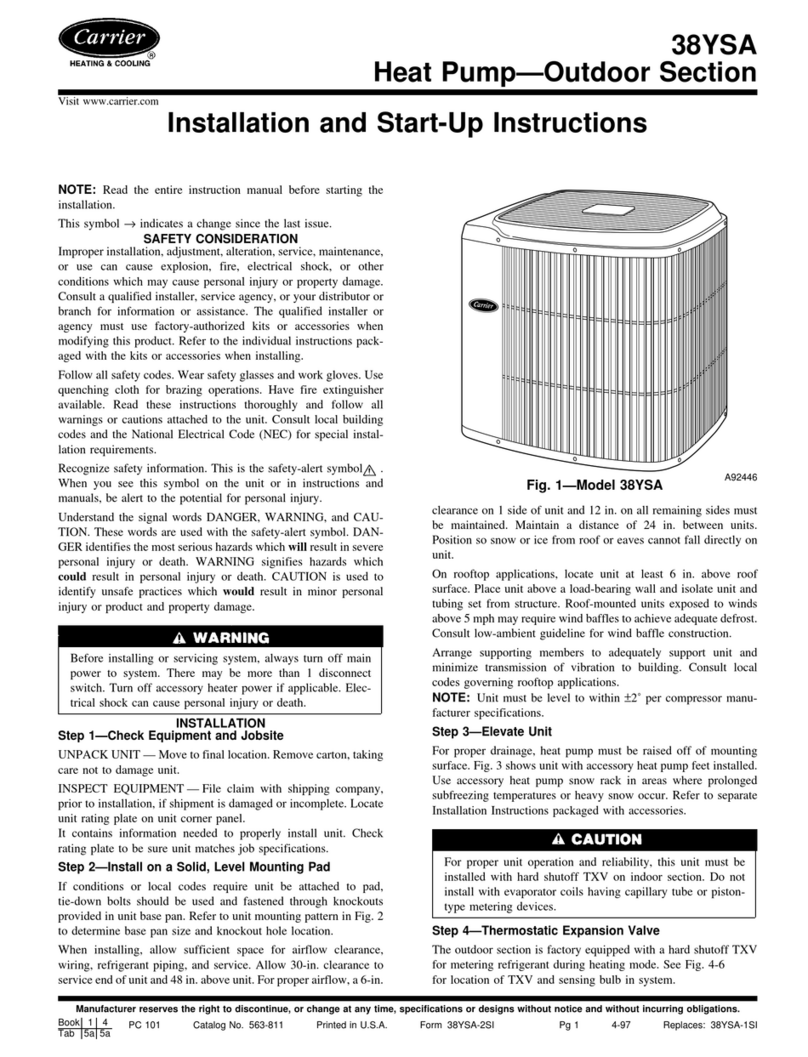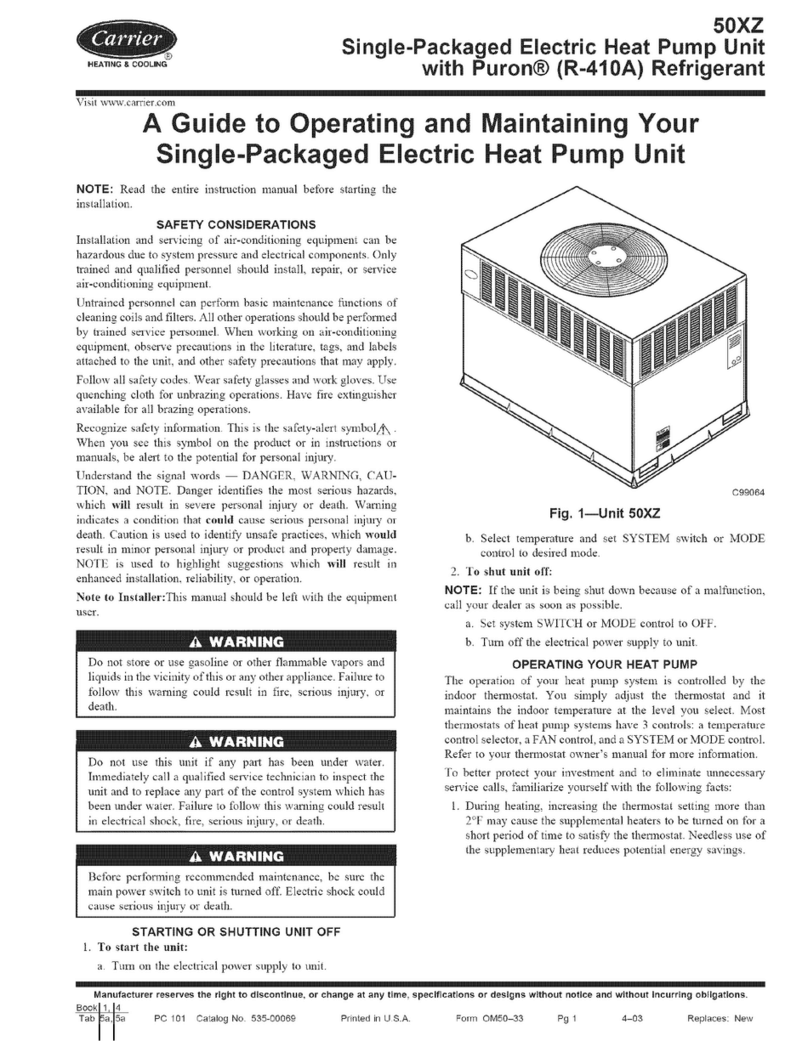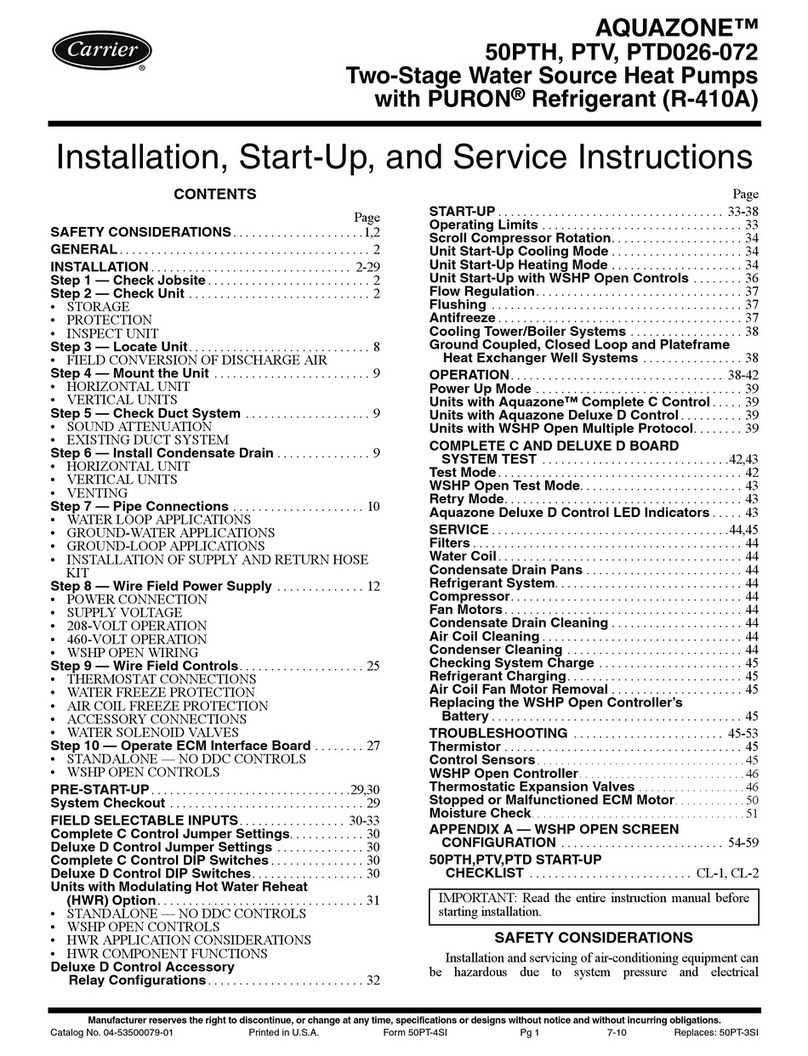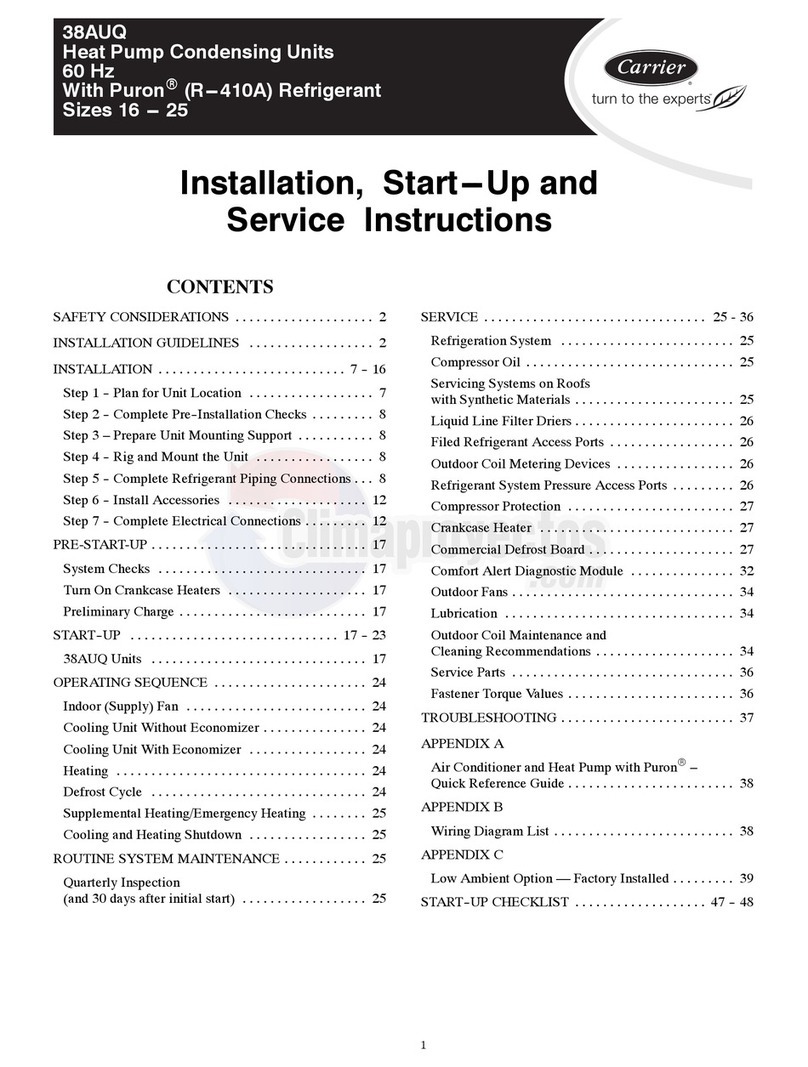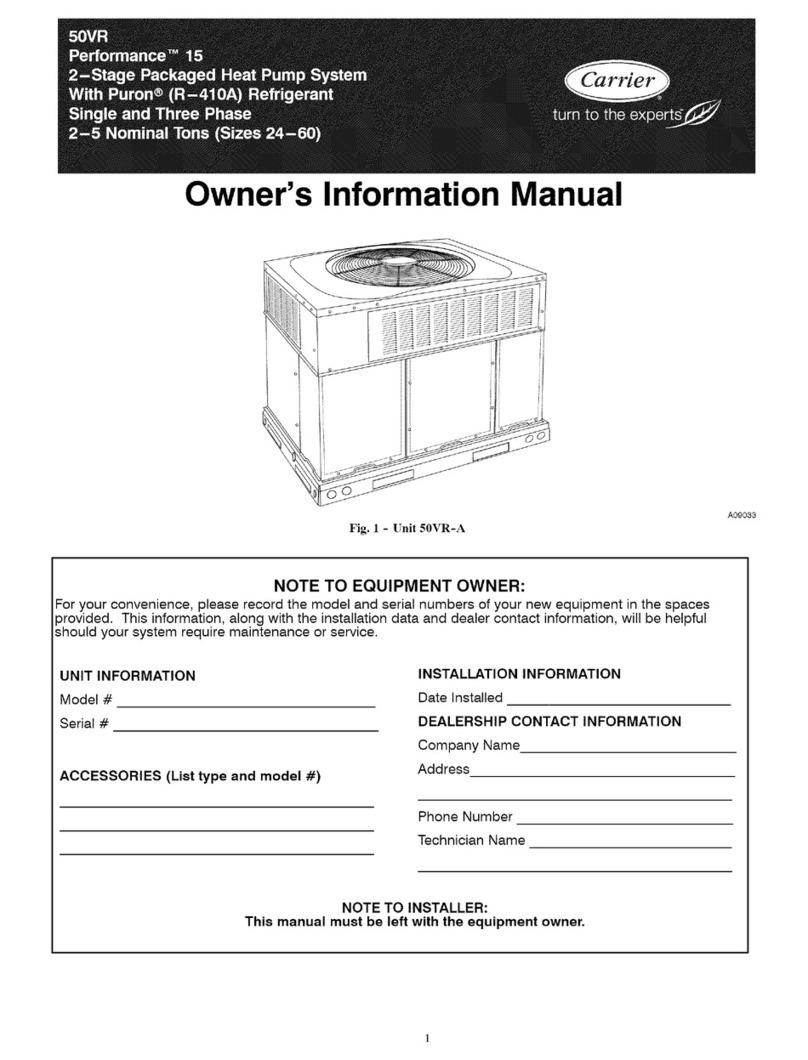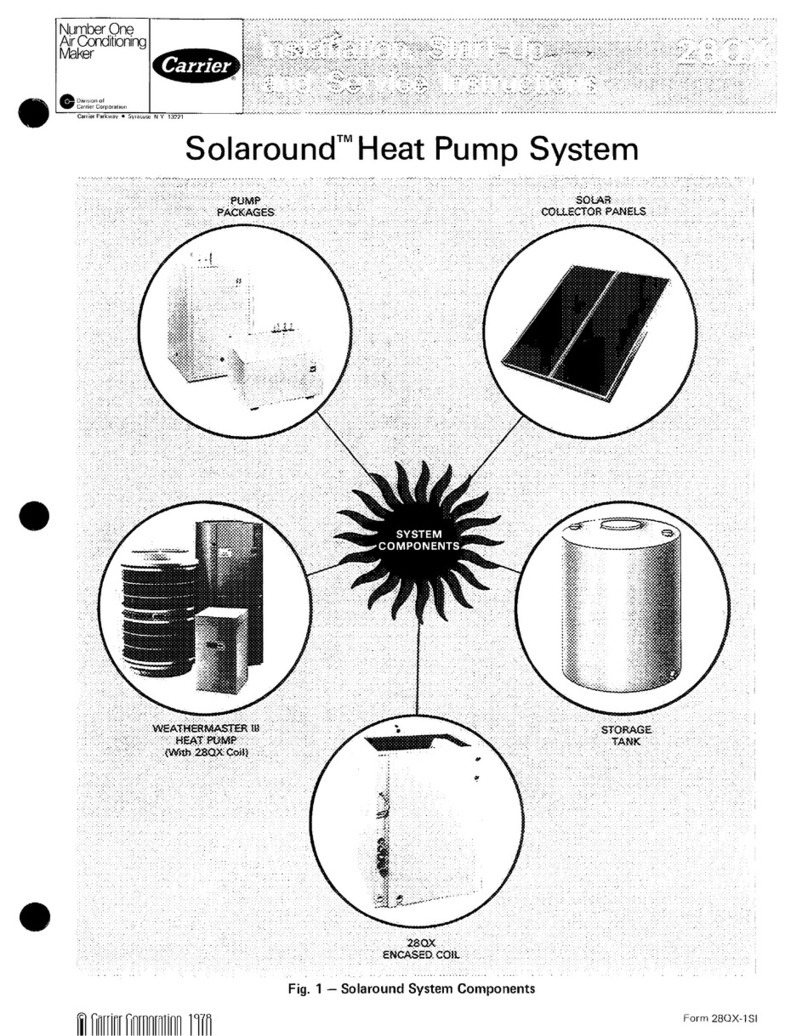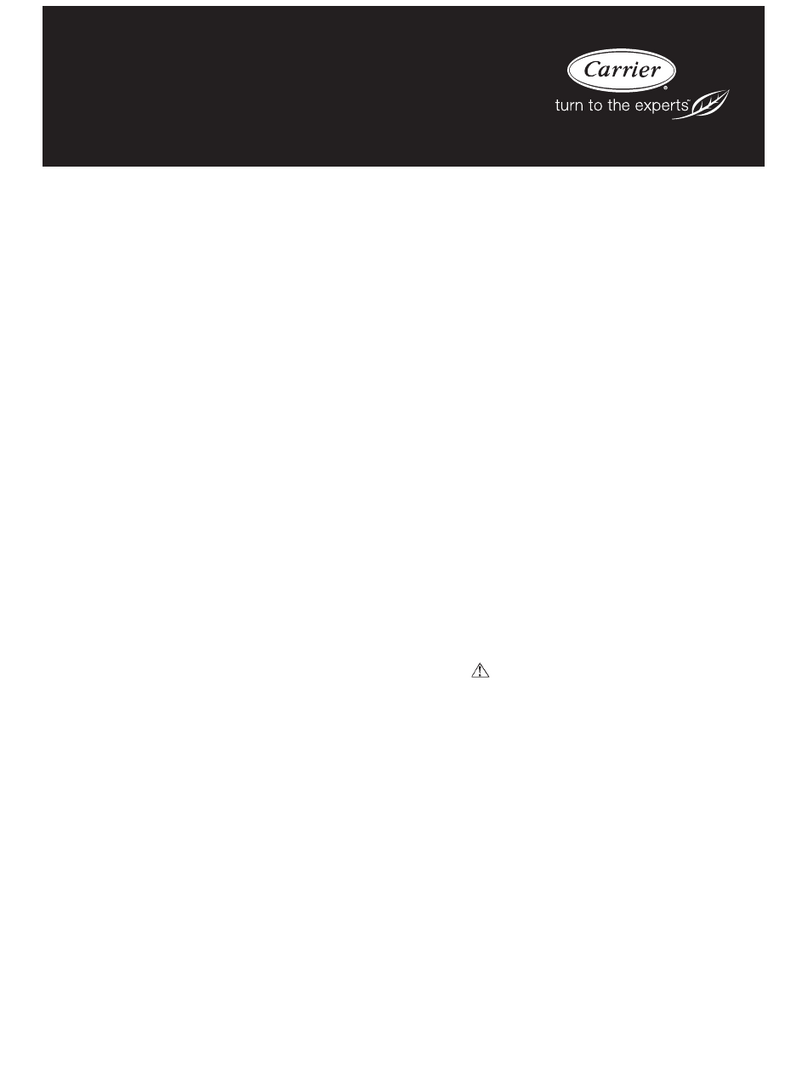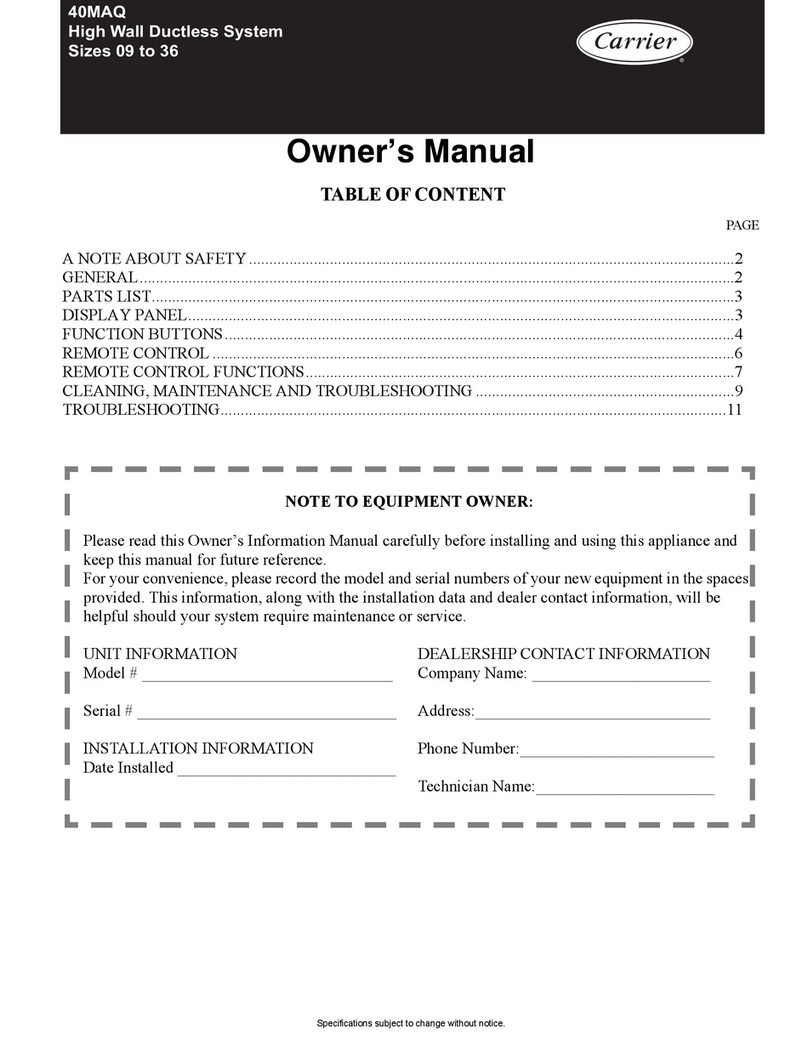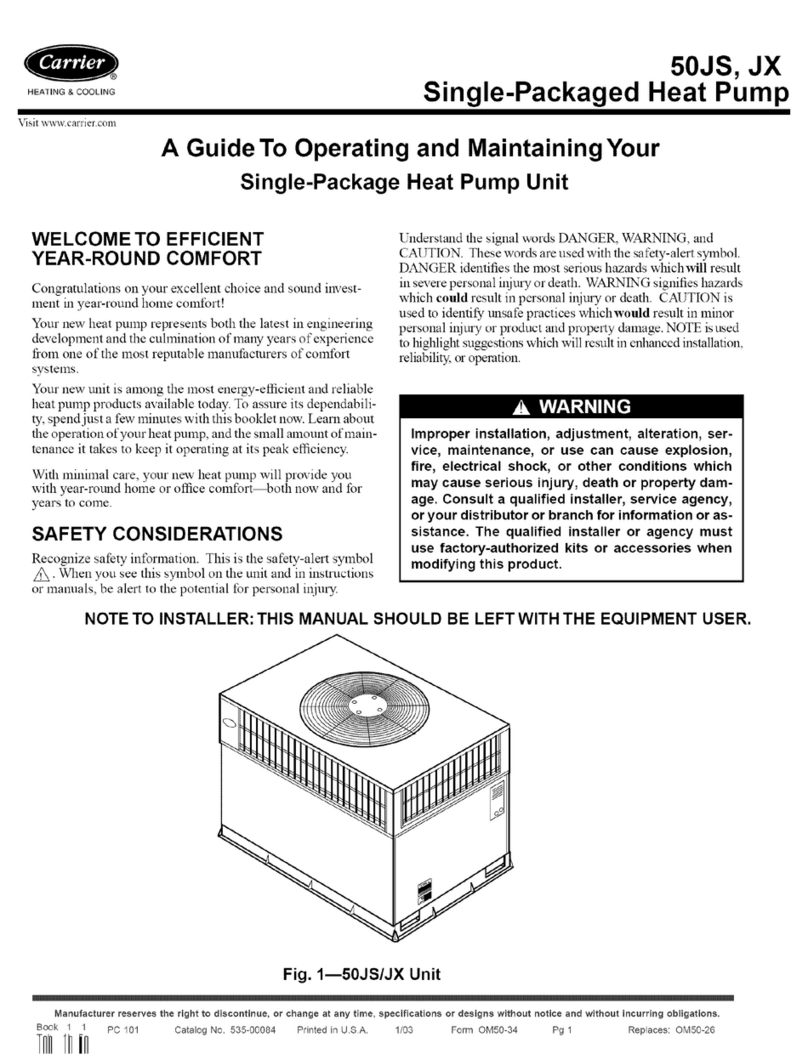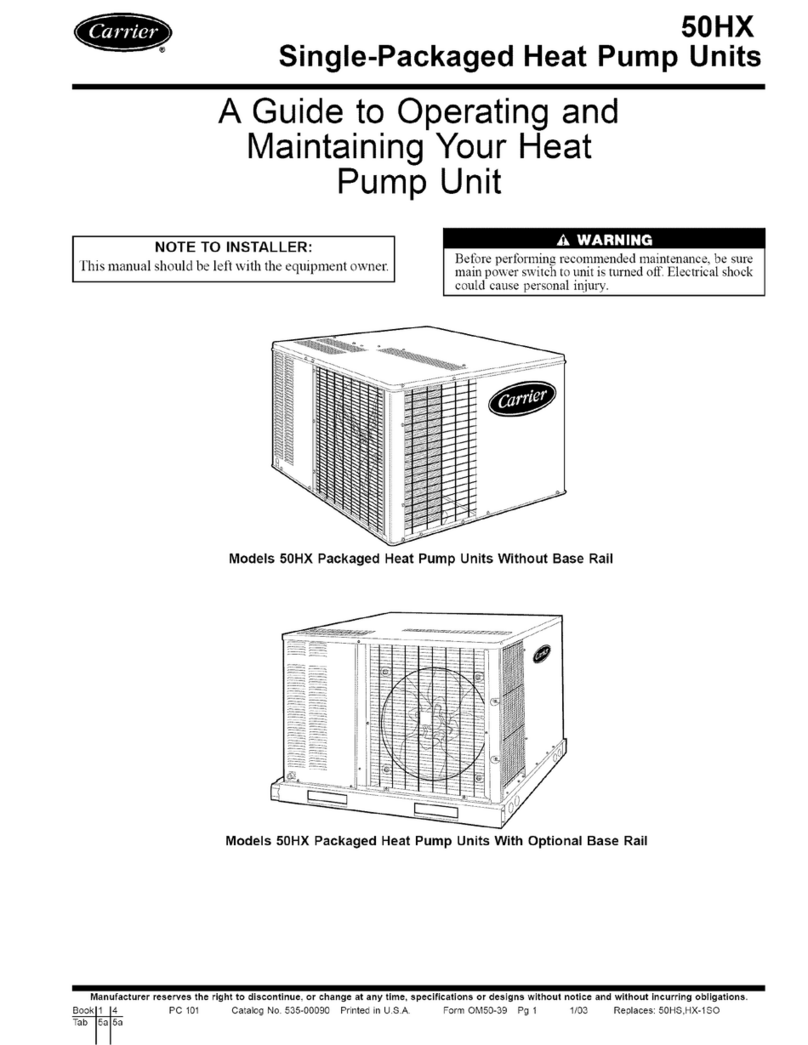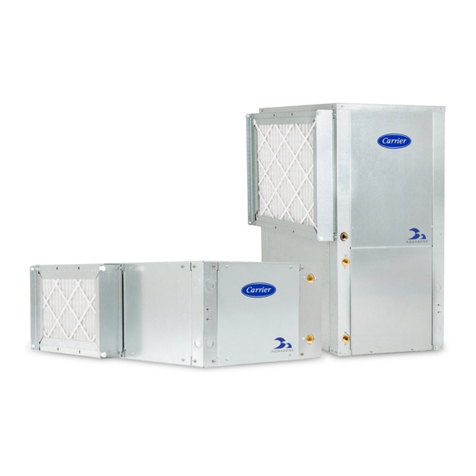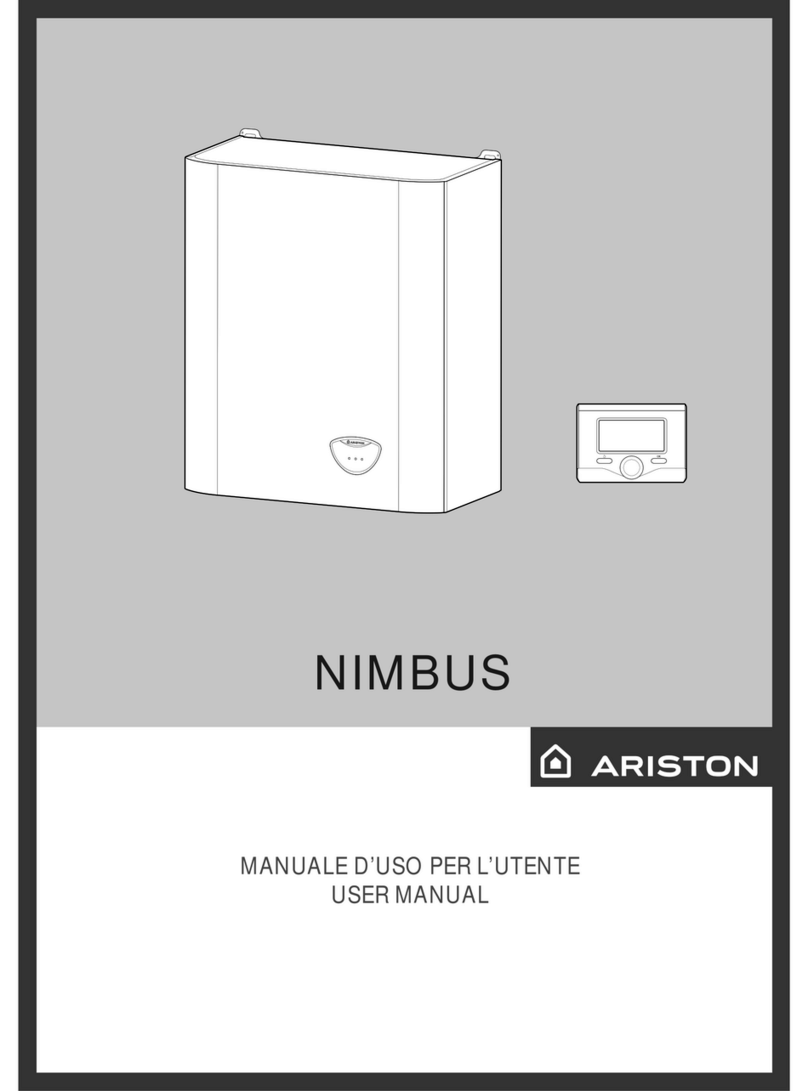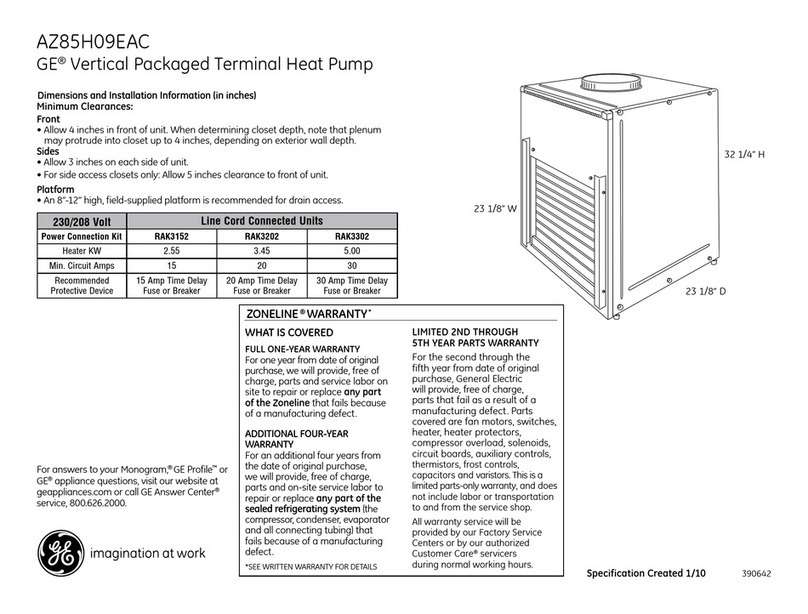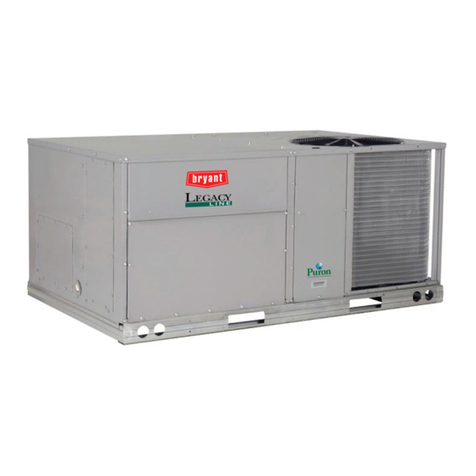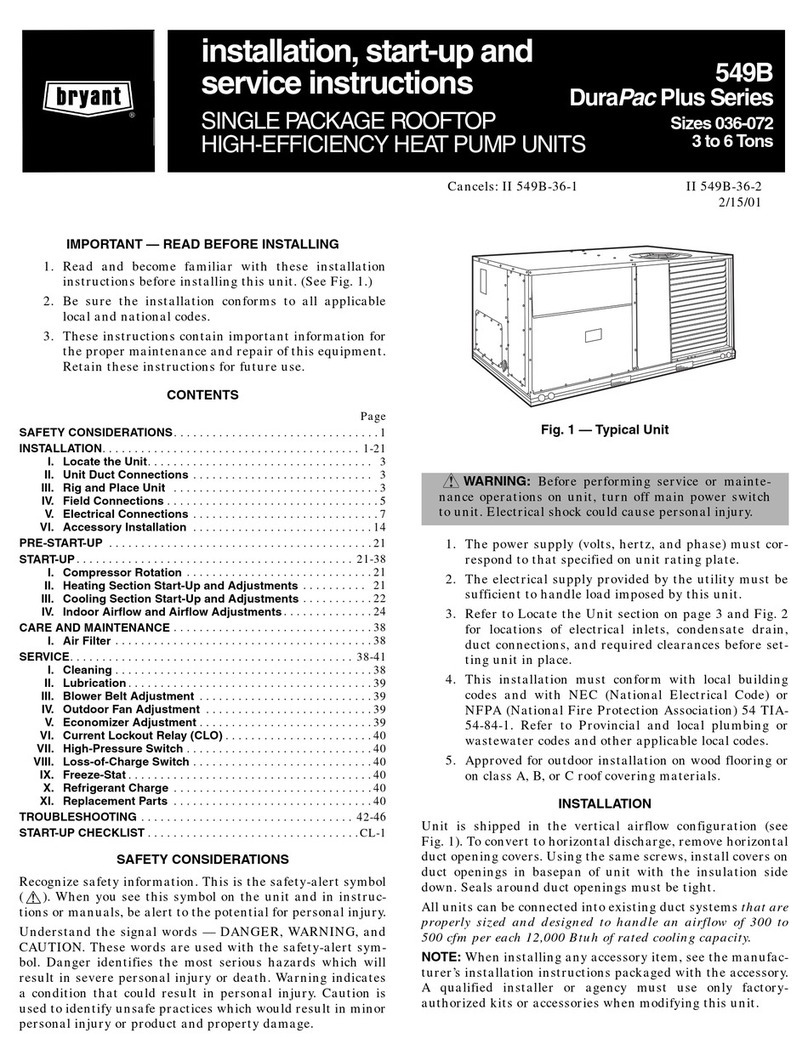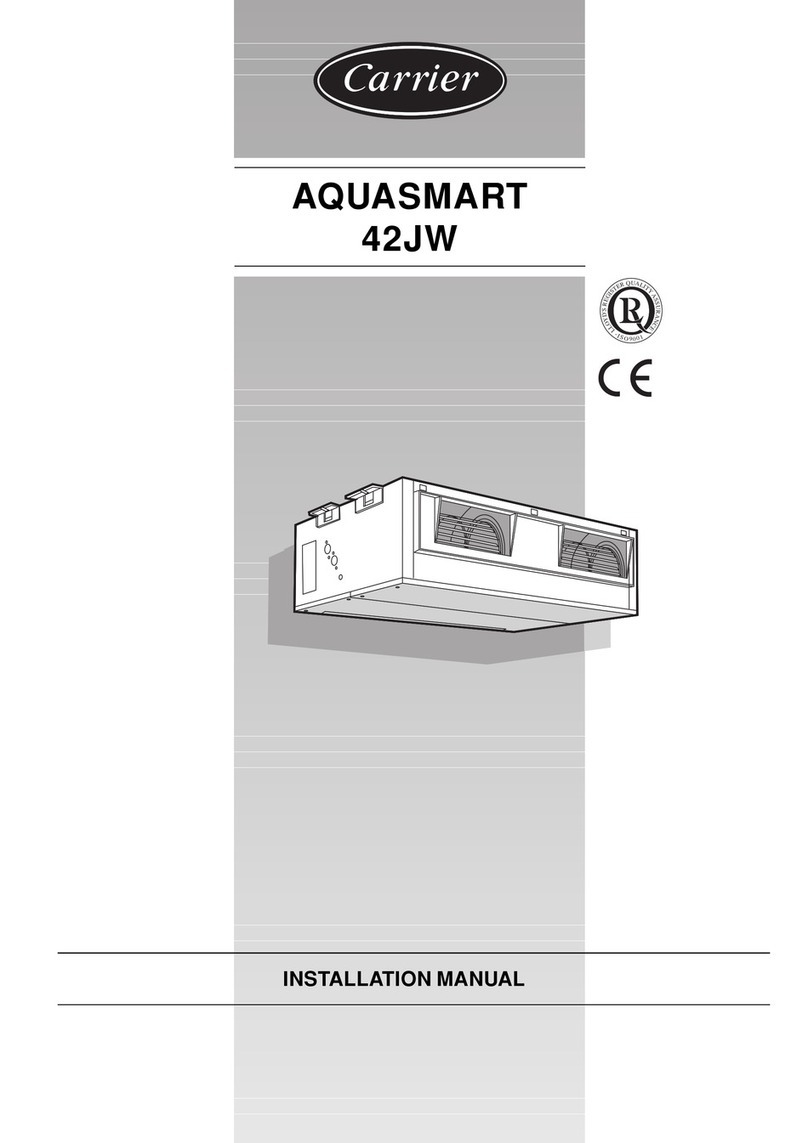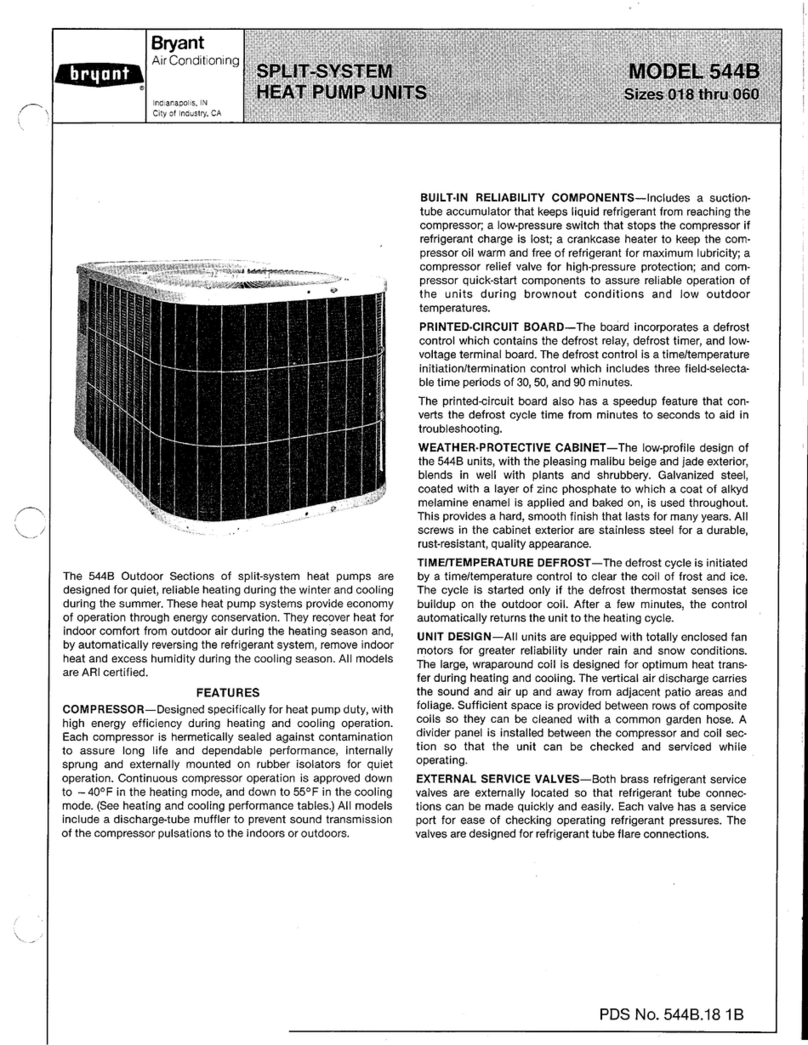Fig. 2--Typical InstaJJation
li)r specific identification of a unit. You should liuniliarize yourself
with the product, model, and serial numbers listed on each rating
plate. Record them li)r li_ture reli_rence in the space provided at the
end of this booklet.
iMPORTANT FACTS
To better protect your investment and to eliminate unnecessary
calls_ familiarize yourself with the lollowing facts:
1. Your heat pump system should never be operated without a
clean air filter properly installed. Plan to inspect the filter
periodically. A clogged air filter will increase operating costs
and shorten the life of the unit.
2. Supply-air and return-air registers should not be blocked.
Drapes, liarlliture, and toys are some of the items commonly
lound obstructing registers. Restricted airflow lessens the
unit's efficiency and lili: span.
3. The outdoor unit nmst have unrestricted airflow. Do not cover
the unit, lean anything against it, or stand on it. Do not allow
grass clippings, leaves, or other debris to accumulate around
on top of the unit. Maintain a 12-in. minimum clearance
between the outdoor unit and tall grass_ vines_ shrubs, etc.
4. Your nmltipurpose indoor thermostat is the control center lk)r
your heat pump system. You should familiarize yourself with
its proper operation. Attempting to control the system by other
means liar instance, switching the electrical supply power
ON and OFF may cause damage to the unit (See Fig. 4).
5. During heating, increasing the thermostat setting more than 2
degrees may cause the supplemental heaters to be turned on
lot a short period of time to satisfy the thermostat. Needless
use of the supplementary heat reduces potential energy sav-
ings.
6. You may find that you can maintain greater personal comli)l't
by running the fan continuously. "Air pockets" can lbrm due
to the structure of the house, placement of registers, etc. air
pockets may be too cool or warm lot your liking. Continuous
lhn operation minimizes any temperature difli:rences. Also,
systems equipped with electronic or mechanical air cleaners
and/or humidifiers ofli?r the added benefits of having the air
continuously cleaned year-round and humidified during the
winter season.
7. A system equipped with a heat or energy recovery ventilator
ofli:rs the advantage of exhausting stale air li"om the home and
allowing fi'esh air in li"om the outdoors while minimizing heat
loss.
8. Your system may also be equipped with a zoning system
which allows individual control over the temperatures of
separate areas of your home.
9. Your heat pump will remove humidity li"omyour holne during
the cooling season. Al_er a li:w minutes of operation, you
should be able to see water trickle l?'om the condensate drain.
Check this occasionally to be sure the drain system is not
clogged. Of course, don't expect to see much drainage if you
live in a very dry environment.
10. During the heating cycle, air from your registers may seem
cooler than you might first expect. This is because your heat
pump delivers a constant flow of air at around 90"F to 105°F
instead of sudden bursts of hot air as with a conventional
lurnace. This air may li:el cooler because it is slightly less than
your skin temperature. However, it is sulTiciently warm to
keep you comli_rtable.
11. Ice or frost will tend to lkmn on the coil during the winter
heating operation. Your heat pump is designed to automati-
cally melt the ice. When in this deli"ost cycle, it is normal 1o17
steam or lk}gto rise l_'om the outdoor unit. Do not be alarmed!
12. Do not operate your unit in cooling mode when outdoor
temperatures are below 55"F unless your unit was modified lot
low-ambient operation.
13. Do not operate your unit in heating mode when outdoor
temperatures are above 66°F unless you set your them_ostat to
emergency heat mode.
FIRE AND ELECTRICAL HAZARD
Failure to lk)llow this warning could result in personal injury,
death and/or property damage.
To prevent serious injury, death, or property damage, read
and li_llow all instructions and warnings, including labels
shipped with or attached to unit beli_re operating your new
heat pump.
OPERATING YOUR HEAT PUMP
The operation of your heat pump system is controlled by the
indoor thermostat. You simply adjust the thermostat and it
maintains the indoor temperature at the level you select. Most
thermostats lk)r heat pump systems have 3 controls: a temperature
control selector, a FAN control, and a SYSTEM or MODE control.
COOLING MODE
When operating in cooling mode, your heat pump will run in
cooling mode until the indoor temperature is lowered to the level
you have selected. On extremely hot days, your heat pump will run
li)r longer periods at a time and have shorter "ofP' periods than on
moderate days.
The li)llowing are typical conditions that add extra heat and/or
hunddity to your home. Your heat pump will work longer to keep
your home comli)rtable under these conditions:
1. Entrance doors are fi'equently opened and closed
2. Laundry appliances are being operated
3. A shower is running
4. More than the usual number of people are present in the home
5. More than the normal number of electric lights am in use
6. Drapes are open on the sunny side of the home
HEATING MODE
With the SYSTEM or MODE control of your indoor thermostat set
to HEAT, your heat pump will run in heating mode until room
temperature is raised to the level you have selected. Of course_
your heat pump will have to operate lk_r longer periods to maintain
a comli_rtable environment on cooler days and nights than on
moderate Ol'Jes.
